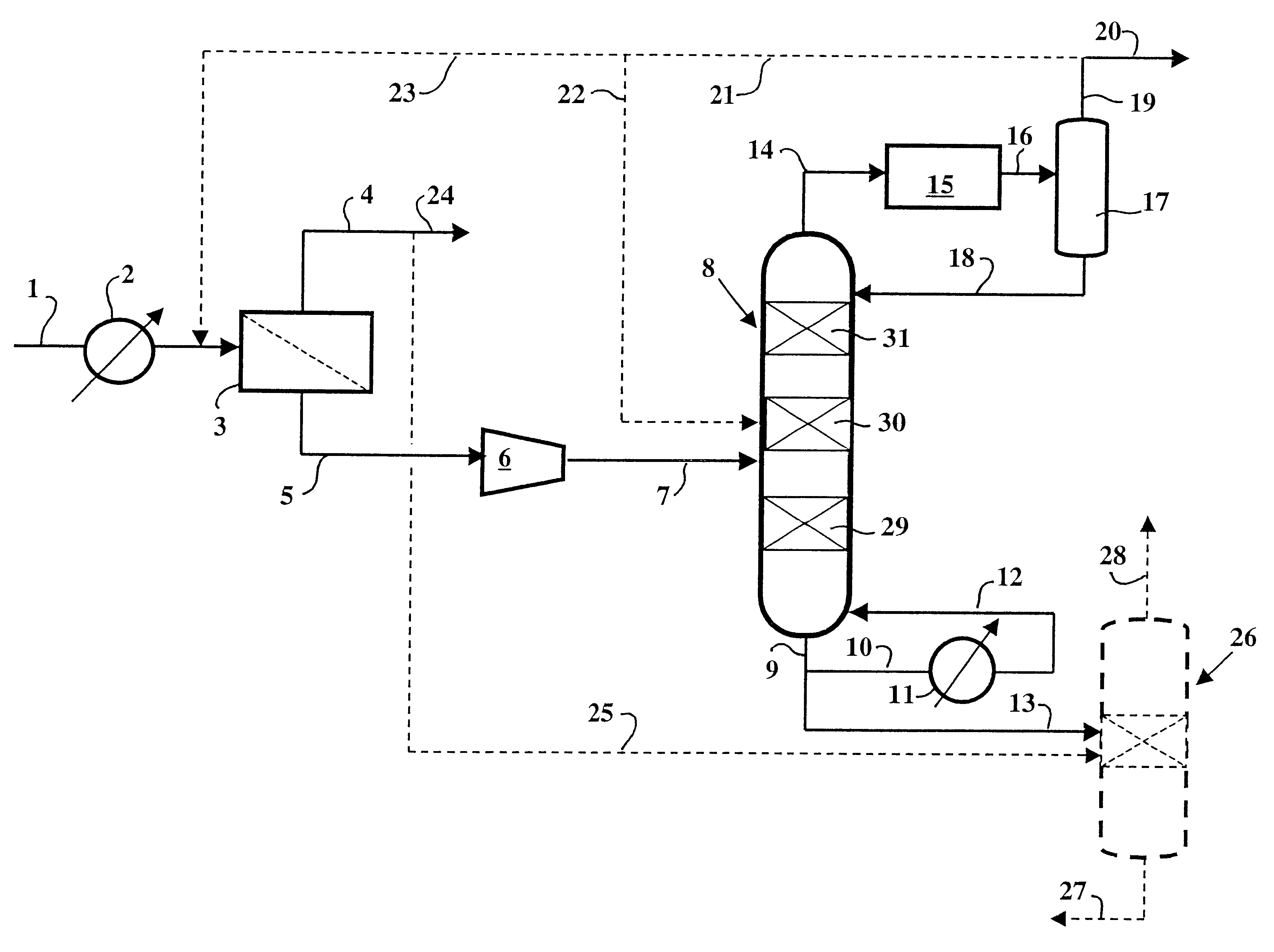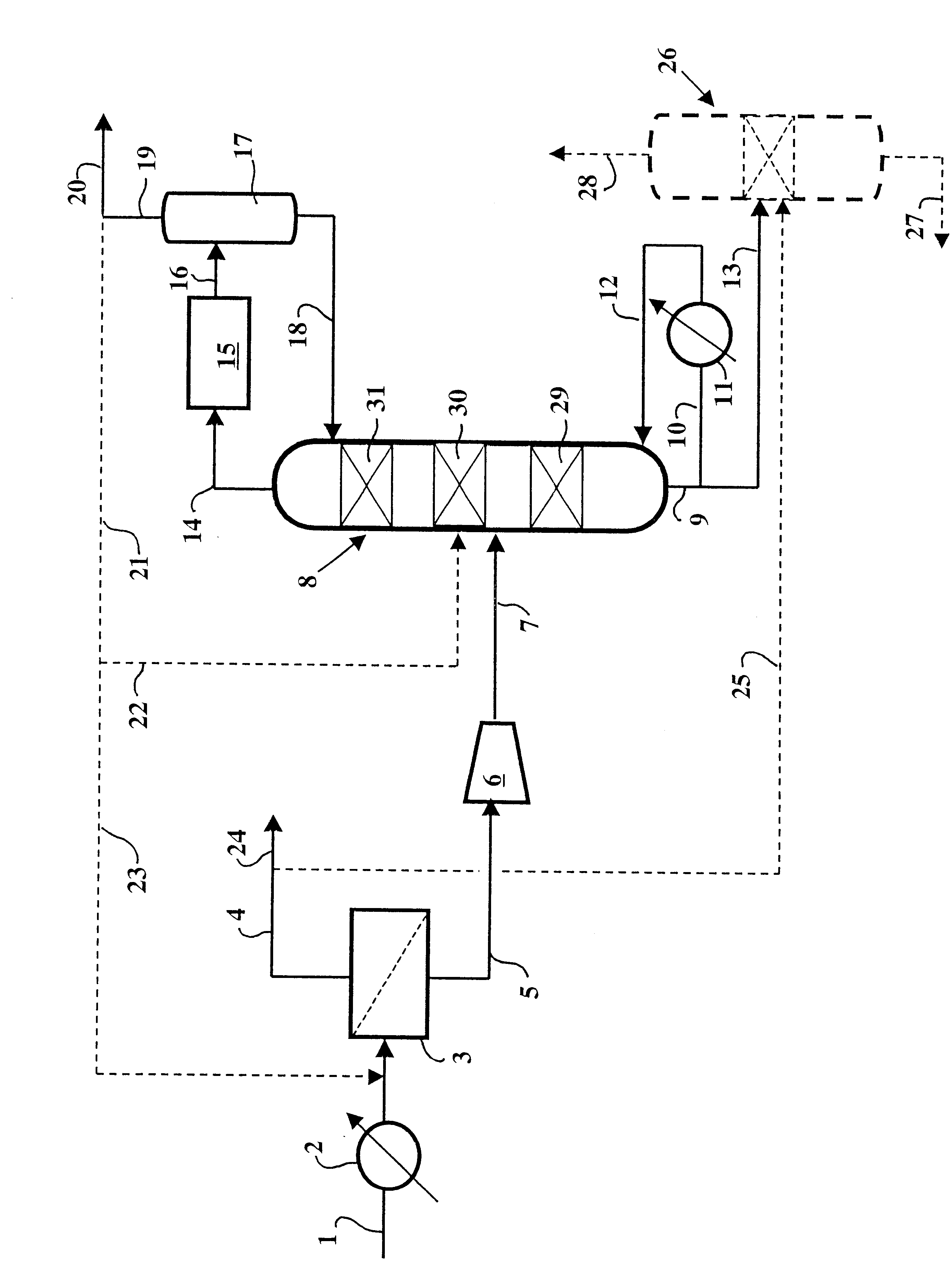Selective hydrogenation process comprising partial separation of hydrogen by a membrane upstream of a reactive column
a hydrogenation process and membrane technology, applied in the direction of hydrogen separation using solid contact, gaseous mixture working up, organic chemistry, etc., can solve the problems of runaway risks, increased unsaturation of hydrocarbons, and high cost of complete upstream separation
- Summary
- Abstract
- Description
- Claims
- Application Information
AI Technical Summary
Problems solved by technology
Method used
Image
Examples
example 2 (
In Accordance with the Invention)
In this example, the feed to be separated in step a) of the process was a C.sub.1 -C.sub.6 feed identical to that of Example 1, but the separation conditions were modified. The membrane used was a polyaramide membrane, the separation temperature was 60.degree. C., the pressure upstream of the membrane was 6 MPa, and the pressure downstream of the membrane was 0.2 MPa.
Table 2 summarises the compositions and flow rates of the permeate and retentate after separation using the membrane. The membrane used could separate the excess hydrogen and produce a mole ratio R=hydrogen: (di-olefins+poly-olefins+acetylenics) in the retentate of 1.01, and high selectivities for hydrogen in the permeate and for hydrocarbons in the retentate (Table 2). The retentate obtained could then be used in selective hydrogenation step b) without the need for supplemental addition or separation of hydrogen.
PUM
| Property | Measurement | Unit |
|---|---|---|
| pressure | aaaaa | aaaaa |
| pressure | aaaaa | aaaaa |
| pressure | aaaaa | aaaaa |
Abstract
Description
Claims
Application Information
 Login to View More
Login to View More - R&D
- Intellectual Property
- Life Sciences
- Materials
- Tech Scout
- Unparalleled Data Quality
- Higher Quality Content
- 60% Fewer Hallucinations
Browse by: Latest US Patents, China's latest patents, Technical Efficacy Thesaurus, Application Domain, Technology Topic, Popular Technical Reports.
© 2025 PatSnap. All rights reserved.Legal|Privacy policy|Modern Slavery Act Transparency Statement|Sitemap|About US| Contact US: help@patsnap.com


